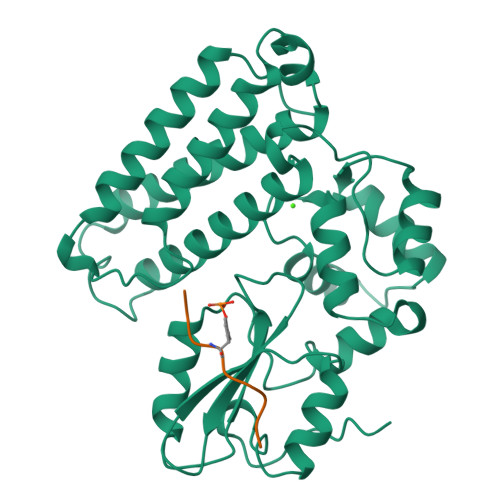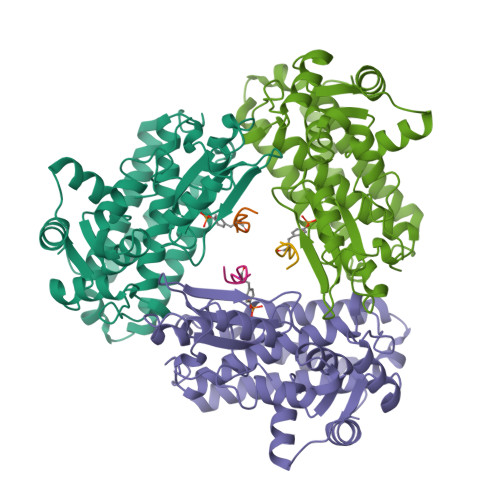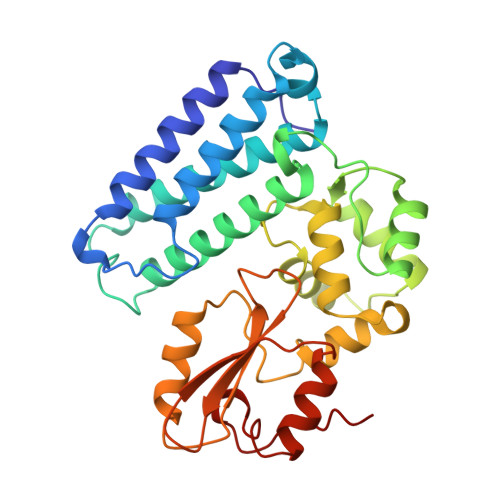Structure of the amino-terminal domain of Cbl complexed to its binding site on ZAP-70 kinase.
Meng, W., Sawasdikosol, S., Burakoff, S.J., Eck, M.J.(1999) Nature 398: 84-90
- PubMed: 10078535
- DOI: https://doi.org/10.1038/18050
- Primary Citation of Related Structures:
1B47, 2CBL - PubMed Abstract:
Cbl is an adaptor protein that functions as a negative regulator of many signalling pathways that start from receptors at the cell surface. The evolutionarily conserved amino-terminal region of Cbl (Cbl-N) binds to phosphorylated tyrosine residues and has cell-transforming activity. Point mutations in Cbl that disrupt its recognition of phosphotyrosine also interfere with its negative regulatory function and, in the case of v-cbl, with its oncogenic potential. In T cells, Cbl-N binds to the tyrosine-phosphorylated inhibitory site of the protein tyrosine kinase ZAP-70. Here we describe the crystal structure of Cbl-N, both alone and in complex with a phosphopeptide that represents its binding site in ZAP-70. The structures show that Cbl-N is composed of three interacting domains: a four-helix bundle (4H), an EF-hand calcium-binding domain, and a divergent SH2 domain that was not recognizable from the amino-acid sequence of the protein. The calcium-bound EF hand wedges between the 4H and SH2 domains and roughly determines their relative orientation. In the ligand-occupied structure, the 4H domain packs against the SH2 domain and completes its phosphotyrosine-recognition pocket. Disruption of this binding to ZAP-70 as a result of structure-based mutations in the 4H, EF-hand and SH2 domains confirms that the three domains together form an integrated phosphoprotein-recognition module.
Organizational Affiliation:
Department of Biological Chemistry and Molecular Pharmacology, Harvard Medical School, Dana-Farber Cancer Institute, Boston, Massachusetts 02115, USA.





















